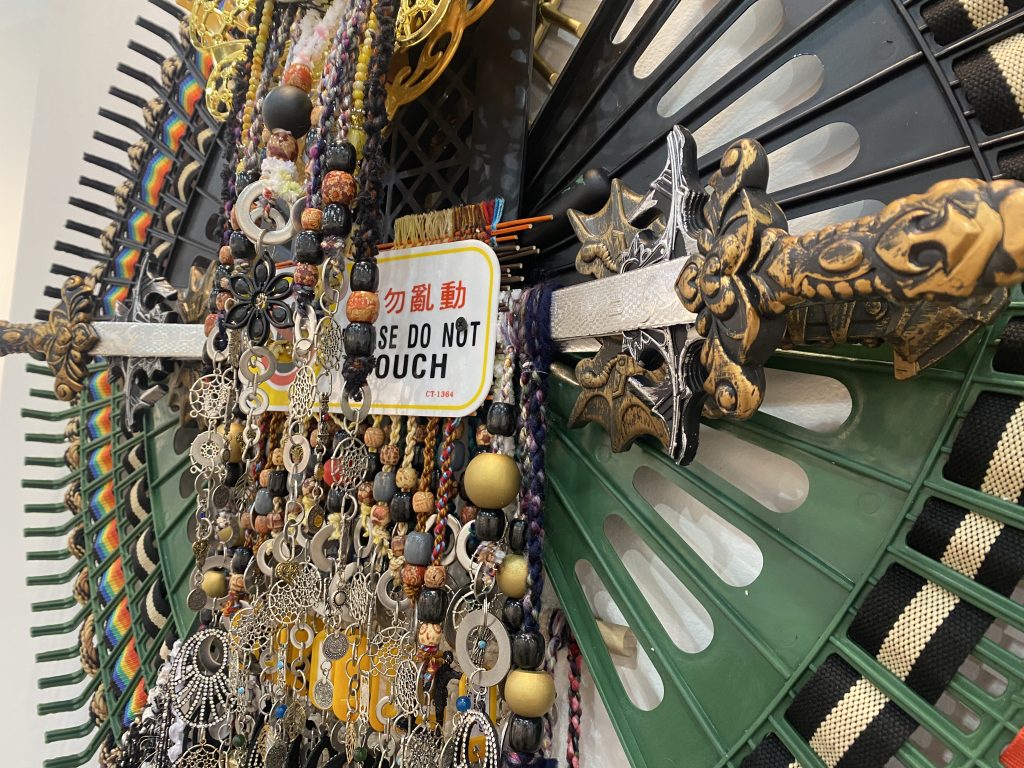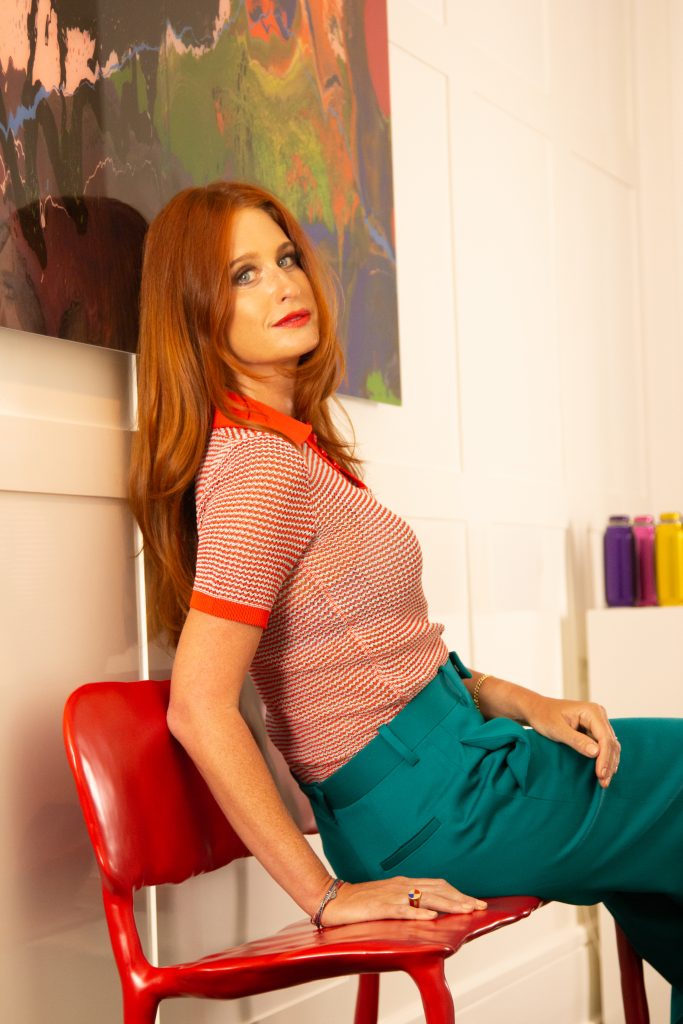ZONA MACO 2023: Crossing Continents and Cultures
Artworks made from found materials, incorporating talismans, using the Pua Kumbu weaving technique and more

Mexico’s capital city has always been a melting pot of art and design—a Haussmanian street kisses a Brutalist structure before melting into Luis Barragán’s mid-century modernism on the way to Frida Kahlo’s Casa Azul in colonial Coyoacan. Navigate the CDMX subway system thanks to Lance Wyman’s wayfinding pictographs, and then visit one of Diego Rivera’s murals to honor the public servants who built it. But in the shadows of all this modernity remain the pre-Hispanic artifacts that tell the story of a Mexico before its conquest, whether by ruin or by place-name.
CDMX is home to an estimated one million Indigenous-identifying citizens who speak 55 of 68 recognized native languages, despite portions of the city yielding to English as more expats descend on the capital than ever before. This duality is reflected at this year’s ZONA MACO; while definitively an international contemporary art fair, non-Western influences are not to be overlooked. Here, we highlight five artists featured at the festival who explore art beyond the European affair, from celebrations of cross-continental multiculturalism to critiques of technology driven neo-colonialism.

Kojo Marfo
In his newest series of portraits, entitled Strangers, Kojo Marfo brings forth the beauty that can flourish when various cultures are encouraged to cross-pollinate. The London-based Ghanaian artist weaves together his Akan heritage with recognizably Western influences, using his own struggle with identity to dream of “a society where we all feel responsible for one another.” With titles such as “Beloved” and “Devotion,” these paintings encompass universal virtues as a way to break down the constructs that hold us apart from each other, while recognizing the divinity of our union as humans with nature. “Each figure is meant to be a stranger, yet someone we all might recognize,” JD Malat gallery manager Annie Pereira tells us, “maybe even seeing ourselves in any one of them.”

Moris (Israel Meza Moreno)
There is no mercy in Moris’ world, neither in his art nor in the cartel-run barrio the artist grew up in. Instead, the artist (represented by Marc Straus Gallery and Arroníz Contemporary Art Gallery) finds solace in translating into his work the means of survival and methods of maintaining dignity that spring forth from those who navigate such precarity. This is no plea for pity, but instead an honoring of the creativity necessary to endure. The subject matter is clearly brutal, yet presented in an aesthetic similar to the wheat paste art collages that manifest in the streets of Mexico, often as sites of popular politics. Moris also codifies the deep ancestral wounds that continue to manifest in today’s violence. From his paintings hang objects of jade and steel, which are respectively Indigenous and European materials, a reminder that genocidal conquest has a long history here.

Kazuki Takakura
Osaka-based YOD Gallery was established to promote classic Japanese aesthetic culture through the lens of emergent media technology, a mission perfectly expressed within the work of Kazuki Takakura. A physical manifestation of his NFT collection Buddha Verse, Takakura presented a mandala of nine prints using AI interpretations of his original pixel art NFTs. Each print represents one of the Buddhist evils (such as greed, envy and lust) which are the root of all suffering in this world. There is an irony in exhibiting this work at one of the wealthiest art fairs in the world, but the belief that artistic merit should manifest as value that fundamentally supports the creator rings true throughout.

Simon Vega
In 2021 El Salvador became the first country in the world to accept Bitcoin as legal tender. El Salvadorian artist Simon Vega clearly has an opinion about this move, presenting two recent pieces entitled “Ku Cool Crypto Klan” and “Crypto-Maya Mask” at this year’s ZONA MACO with MAIA Contemporary. Recreating elements from Maya frieze sculptures out of rubber litter found on the beaches of El Salvador, Vega critiques the invasion of technologically-driven colonialism and the destruction of Indigenous cultures therein. “The transformations of the area where I live and the development of the coastal area is dominated by a strong presence of cryptocurrency even though some of these places are very primitive in a sense, without electricity, let alone smartphones,” Vega tells us. Rubber, too, is Indigenous to South America, making the use of its discarded commoditized form for his artwork even more insidious.

Anne Samat
More idolatry than sculpture, Anne Samat’s work brings sacred myths to everyday items such as kitchenware, plastic toys and trinkets obtained at dollar stores. Each totem is created in the tradition of a Pua Kumbu weaving technique native to Samat’s homeland of Malaysia. It’s a demanding, meticulous process that uses textile design to write folklore into cloth as a way of keeping legends alive. Samat (represented by Marc Straus Gallery) uses this combination of ancient ritual and found object to lift her own biography into the realm of legend that transcends time, making evident that all which has inspired her art is clearly worthy of worship.
Hero image, detail of Anne Samat’s work, by Gabriella Garcia












